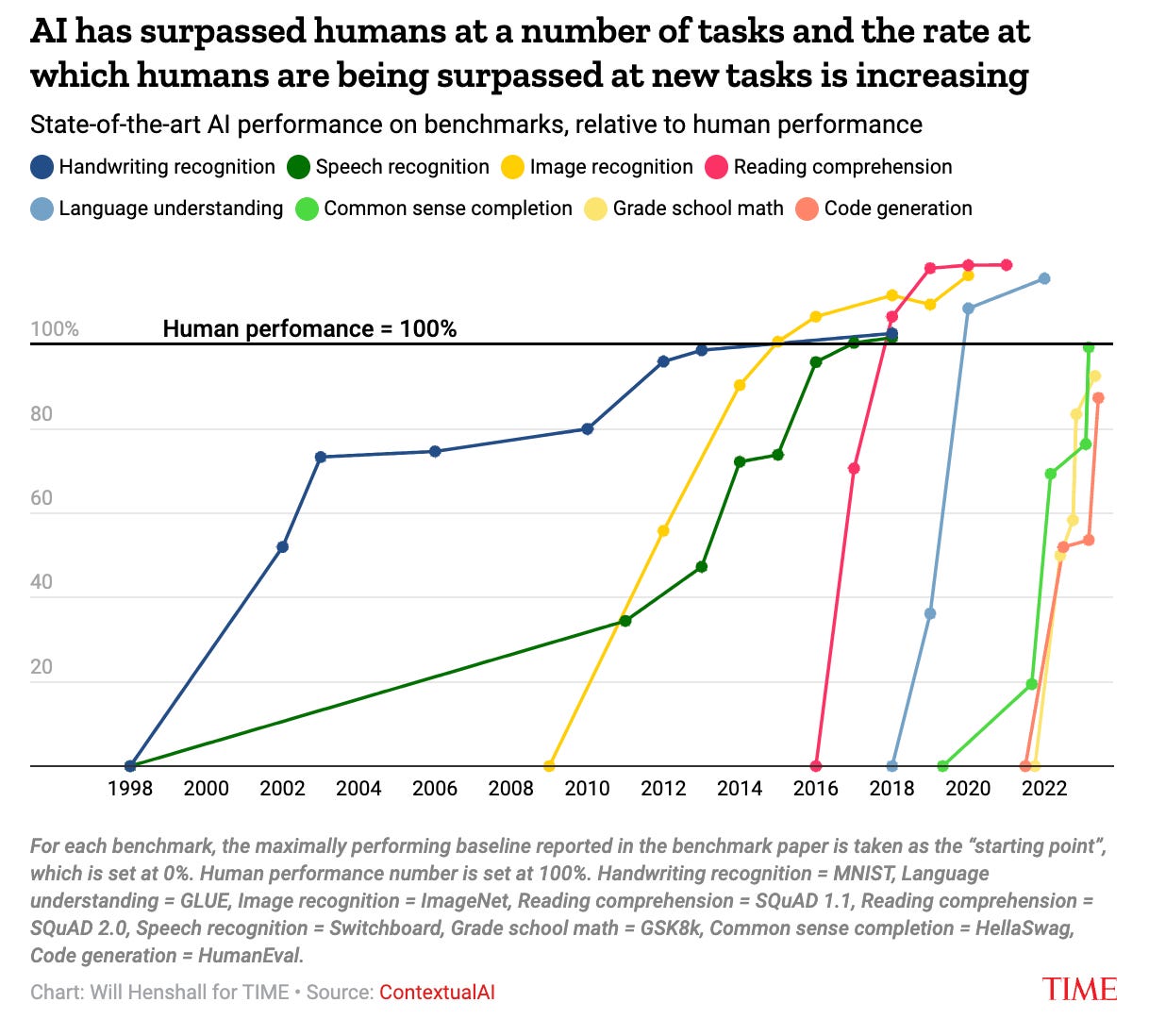
You did it. You made it to another Monday, and you should celebrate that; not everyone does.
Last week, I re-shared some tools I use all the time; hopefully, they were helpful to you.
👋🏻 A big, warm welcome to all the new subscribers. Seriously, I’m glad you're here.
Let’s Dig In ⛏️
I recently wrapped up a two-week AI For Business Leaders course hosted and run by the brilliant Allie K. Miller. The cohort, hosted on Maven, was about introducing AI so that business leaders can practically apply it to everyday use. While there was an information tidal wave across the roughly eight hours of lectures, guest speakers, and collaborative projects, here are my top three takeaways you can apply to your everyday workflows.
This is just the beginning.
The timeline of tech advances is well-known. IPhones and significant software updates are released yearly, while more minor updates are released monthly. Bedrock changes, such as the introduction of the mouse, mobile, or voice assistants, occur every few decades.
We will move away from months and years and closer to weeks and months as AI advances. Time released an excellent article titled “4 Charts That Show Why AI Progress Is Unlikely to Slow Down” that goes more in-depth, but check out this chart, holy moly.
You are ahead of the curve.
If you're reading this, you are also an early technology adopter, whether you think you are or not. This is a much more common phenomenon in knowledge workers than you think. People assume other people know what they know, which is categorically false.
If you're experimenting with AI now, you're still part of the few, so give yourself some credit and keep going. You are part of the first wave of AI implementation; build something unique.
Some Clichés are True
There's an overwhelming amount of negative connotation associated with AI, and you could argue both sides as to its validity. Regardless, AI will not take (most) jobs, but someone trained in AI will.
Some clichés are clichés for a reason, and I think this one is spot on. What can you do right now to get started? Check out the suggested tools below.
The days of writers, creators, and thinkers staring at a blank page are dead.
Tools I use that you should try 🔧
🤖 Poe - or specifically, TaskCrusherAI built on Poe
This platform enables you to build AI bots using no code. TaskCrusherAI is a bot that takes your to-do list, analyzes it, breaks down the time needed to complete all your tasks, spits out a whole plan to get everything done, and it’s wild. It uses ChatGPT, GPT-4, Claude, PaLM 2, and more.
✍🏻 GrammarlyAI
I’ve written about this before, but it’s a great place to start using GAI (Generative AI) every day. As you write, it will analyze your text and, using a tool, will allow you to apply prompting to your text, such as “improve this,” “expand on this text and continue writing,” and “make this shorter and more concise.”
🌐 Google Bard
Slightly different than OpenAI’s Chat GPT, Bard is better suited for tasks that require up-to-date information or the ability to access the internet. At the same time, ChatGPT is better suited for jobs that require creative writing or text summarization.
ICYMI News 📰
ChatGPT can now see, hear, and speak - oh boy.
Spotify develops an AI-powered voice cloning tool that can translate podcasts into multiple languages - Music Business Worldwide
AI investment forecast to approach $200 billion globally by 2025 - Goldman Sachs




